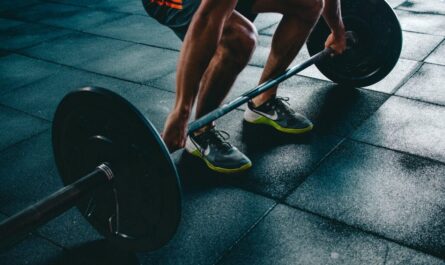Yoga transcends physical activity; it is a profound journey toward understanding and embracing oneself. This ancient practice, rooted in mindfulness and balance, serves as a bridge connecting the body and mind. For people of all shapes and sizes, yoga offers a gentle and inclusive approach to embrace their unique selves. Body awareness and acceptance are central to yoga, making it a powerful tool to combat the unrealistic beauty standards imposed by society. Let’s dive into the role of yoga in fostering a deeper connection with our bodies and explore poses that promote self-love and mindfulness.
Understanding Body Awareness in Yoga
Body awareness refers to the mindful connection and understanding of your physical being. It’s not just about recognizing how your body looks but understanding how it feels, moves, and responds. This awareness fosters a sense of gratitude and acceptance for what your body can do rather than focusing on its perceived flaws.
Yoga excels in promoting body awareness through its emphasis on mindful movement and breath control. Each pose encourages practitioners to tune into their sensations, noticing tension, strength, and relaxation. This heightened awareness translates to greater self-compassion, helping individuals develop a healthier relationship with their bodies.
Preparing for a Yoga Practice That Embraces All Bodies
Creating a supportive environment for yoga is the first step toward an empowering practice. Follow these steps to prepare:
- Set the Mood
Select a calm and welcoming environment to practice yoga. Add calming elements like soft lighting, candles, or soothing music. - Wear Comfortable Clothing
Choose flexible, breathable materials that enable free movement. - Use Props
Yoga props like blocks, straps, and bolsters make poses accessible to people of all shapes, sizes, and abilities. - Start with a Purpose
Reflect on your intention for practicing yoga. Whether it’s cultivating mindfulness, reducing stress, or simply enjoying movement, clarity helps create a meaningful session.
Yoga Poses for Body Awareness and Acceptance
These gentle and beginner-friendly poses are designed to celebrate movement and mindfulness while promoting self-acceptance. Adjust and modify them as needed to suit your body.
1. Mountain Pose (Tadasana)
Purpose: Builds grounding and confidence.
Steps:
- Gently close your eyes and take deep, slow breaths, paying attention to how your body is aligned.
- Engage your thighs, elongate your spine, and let your arms rest by your sides.
- Close your eyes and take slow, deep breaths, noticing your body’s alignment.
Benefits:
This foundational pose fosters a sense of stability and self-assurance, reminding you of your innate strength.
2. Cat-Cow Stretch (Marjaryasana-Bitilasana)
Purpose: Improves spinal mobility and heightens body awareness.
Steps:
- Begin on all fours, ensuring your wrists are aligned with your shoulders and your knees with your hips.
- Inhale as you arch your back, lifting your head and tailbone in Cow Pose.
- Then, exhale while rounding your spine and tucking your chin into your chest in Cat Pose.
- Repeat for several breaths.
Benefits:
This dynamic movement connects breath and motion, helping you explore how your body feels.
3. Child’s Pose (Balasana)
Purpose: Encourages relaxation and self-compassion.
Steps:
- Sit back onto your heels, lower your upper body forward, and extend your arms in front of you.
- Place your forehead gently on the mat and take deep breaths.
Benefits:
Child’s Pose provides a moment of rest and introspection, promoting emotional balance and physical release.
4. Warrior II (Virabhadrasana II)
Purpose: Enhances strength and self-confidence.
Steps:
- Stand in a wide stance and turn one foot out to a 90-degree angle.
- Bend your front knee and stretch your arms out so they are parallel to the floor. Gaze over your front hand and maintain the pose for several breaths.
- Look over your front hand and hold the pose for several breaths.
Benefits:
This pose empowers practitioners to feel strong and grounded, symbolizing resilience and determination.
5. Tree Pose (Vrksasana)
Purpose: Cultivates balance and focus.
Steps:
- Shift your weight onto one leg and place the sole of your opposite foot on your calf or inner thigh.
- Join your palms together at your chest or lift them overhead.
Benefits:
Tree Pose emphasizes stability and self-acceptance, demonstrating how balance is a dynamic, evolving process.
6. Bridge Pose (Setu Bandhasana)
Purpose: Opens the chest and builds self-appreciation.
Steps:
- Lie on your back, knees bent, and feet flat on the mat.
- Press into your feet to lift your hips and interlace your fingers beneath you.
Benefits:
This posture cultivates gratitude for your body’s capabilities and enhances mental clarity.
7. Seated Forward Fold (Paschimottanasana)
Purpose: Encourages introspection and body appreciation.
Steps:
- Sit with your legs extended and spine tall.
- Inhale, lengthen your torso, and exhale as you hinge forward.
- Hold your shins, ankles, or feet, depending on your flexibility.
Benefits:
This pose helps release tension, fostering a sense of calm and acceptance.
8. Corpse Pose (Savasana)
Purpose: Integrates the benefits of your practice and promotes deep relaxation.
Steps:
- Lie flat on your back with arms at your sides, palms facing up.
- Close your eyes and focus on your breath.
Benefits:
Savasana offers a restorative moment to embrace peace and stillness, helping you connect with yourself.
The Role of Mindfulness in Fostering Body Acceptance
Mindfulness is integral to yoga, encouraging practitioners to stay present and observe their experiences without judgment. This practice is transformative in addressing body image concerns, as it redirects focus from external appearances to internal sensations.
Incorporate mindfulness by:
- Paying attention to your breath during poses.
- Observing thoughts without attaching value to them.
- Use affirmations such as “I am enough” or “I respect my body.”
Adapting Yoga for Inclusivity
Yoga is for everyone, regardless of body type, size, or ability. Here are ways to ensure inclusivity:
- Utilize props such as blocks, straps, and bolsters to make poses easier to perform.
- Modify Poses: Tailor each posture to fit your unique needs.
- Focus on Comfort: Avoid comparing yourself to others; yoga is a personal journey.
Benefits Beyond the Mat
Yoga’s impact extends beyond physical health, influencing mental and emotional well-being. Regular practice can:
- Reduce Stress: Mindful breathing and movement calm the nervous system.
- Boost Self-Esteem: Celebrating your body’s abilities fosters confidence.
- Enhance Flexibility and Strength: Gentle poses improve physical endurance.
Creating a Sustainable Practice
Building a long-term yoga routine ensures lasting benefits. Consider these tips:
- Start Small: Dedicate just 10–15 minutes daily to yoga.
- Stay Consistent: Practice regularly to build a habit.
- Join a Community: Connect with others for motivation and support.
The Transformative Power of Yoga
Yoga is more than a series of poses; it is a holistic practice that promotes self-discovery and acceptance. By cultivating body awareness and mindfulness, yoga invites individuals to celebrate their uniqueness and appreciate their bodies. It’s not about achieving the “perfect” pose but about embracing your journey and honoring your potential.
Let your yoga mat be a space where you find peace, strength, and acceptance—a practice that proves every body is worthy of love and respect.
Embracing the Journey of Body Acceptance Through Yoga
Yoga offers an inclusive path to self-discovery, body awareness, and acceptance for individuals of all shapes and sizes. By consistently practicing gentle and mindful poses, you can nurture a healthier relationship with your body while enjoying the mental and physical benefits. Whether you’re just beginning or continuing your yoga journey, remember that the goal is not perfection but progress and self-love. Embrace the transformative power of yoga as a lifelong practice to enhance well-being and celebrate your unique self.



